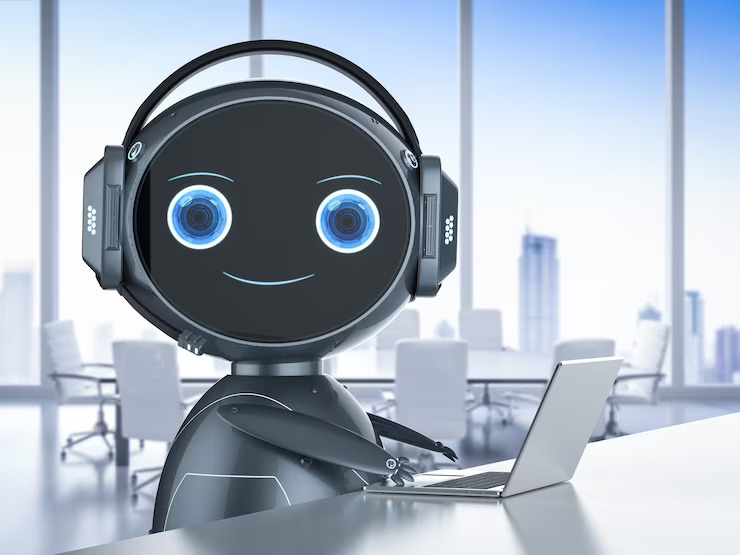Teloz: Maximizing Call Center Productivity through Voice Bot Automation
 teloz
telozDefinition and Purpose of Voice Bots
In the realm of call center technology, voice bots have emerged as a game-changing innovation. A voice bot, also known as a conversational AI voice bot, is an automated system that uses natural language processing (NLP) and speech recognition technologies to interact with callers conversationally.

These intelligent bots are designed to handle various customer service tasks, such as answering inquiries, providing information, and routing calls to the appropriate department or agent. The primary purpose of voice bots in call centers is to enhance customer service efficiency and deliver faster resolutions to customer issues.
Evolution of Call Center Technology
The evolution of call center technology has been fascinating, undergoing significant transformations over the years. Initially, call centers relied heavily on human agents who manually handled incoming calls. As technology advanced, interactive voice response (IVR) systems were introduced to automate certain aspects of call handling.
IVR systems enabled callers to navigate through menu options using touch-tone inputs. However, traditional IVR systems had limitations in terms of flexibility and user experience.
Understanding the Functionality of Voice Bots
Natural Language Processing (NLP) and Speech Recognition
Voice bots, also known as conversational AI voice bots or simply voicebot solutions, rely on cutting-edge natural language processing (NLP) and speech recognition technologies to understand and interpret human speech. NLP enables voice bots to comprehend the meaning behind words and phrases, allowing them to provide accurate responses.
This advanced technology analyzes sentence structures, identifies keywords, and processes contextual information to generate appropriate replies. By harnessing the power of NLP, voice bots can engage in fluid conversations with callers without the need for manual intervention.
Interactive Voice Response (IVR) Systems
Voice bots are often integrated with interactive voice response (IVR) systems within call centers. IVRs serve as the initial point of contact for callers before they are connected to a human agent or guided through automated self-service options. When combined with AI-powered conversational AI voice bot technology, IVRs become more intelligent and capable of handling complex interactions.
With IVR integration, voice bots can efficiently guide callers through various menu options, and prompt them for necessary information such as account numbers or order details using speech recognition capabilities mentioned earlier. Depending on specific customer needs or queries posed by callers during their interaction with IVR systems, advanced conversational AI techniques enable dynamic routing based on real-time analysis which ensures that customers are directed to appropriate departments or receive relevant information promptly.
Integration with Customer Relationship Management (CRM) Software
To provide personalized and contextually relevant information, voice bots are often integrated with customer relationship management (CRM) software. By connecting to a CRM system, voice bots gain access to valuable customer data such as past interactions, purchase history, and preferences. This integration enables the AI voicebot solutions to offer tailored responses and recommendations based on individual caller profiles.
Furthermore, the CRM integration facilitates seamless handoff from the voice bot to a human agent if necessary. When an issue escalates beyond the capabilities of a voice bot, it can intelligently transfer the call along with all relevant information to a human representative.
Benefits of Implementing Voice Bots in Call Centers
Improved Customer Service Efficiency and Response Time
Implementing voice bots in call centers brings numerous benefits, foremost among them being the significant improvement in customer service efficiency and response time. With voice bot solutions, businesses can provide round-the-clock availability to their customers.
Gone are the days of restricted working hours and long waiting times; customers can now seek assistance anytime they need it, even during weekends or holidays. This accessibility boosts customer satisfaction levels and enhances the overall experience.
Cost Reduction and Scalability for Businesses
Integrating AI-powered voice bot technology into call centers yields significant cost reduction opportunities while also enhancing scalability for businesses. One notable advantage is the decreased need for human agents to handle routine tasks that do not require complex decision-making skills or personal interactions. By offloading such repetitive tasks to voice bots, companies can reassign their valuable human resources to more strategic roles that demand critical thinking abilities or empathy-driven interactions.
Additionally, adopting voice bots leads to cost reduction by decreasing the reliance on human agents for routine tasks while enabling scalability in handling high call volumes. As businesses continue to embrace Voicebot conversational AI technology, they can unlock new levels of efficiency and customer satisfaction in their call center operations.
Challenges and Limitations of Voice Bot Technology in Call Centers
Language Barriers and Accents
One of the key challenges faced by voice bot technology in call centers is the presence of language barriers and diverse accents. Accurate speech recognition heavily relies on the capability to understand and interpret a wide range of accents, dialects, and languages.
However, variations in pronunciation, intonation, and regional dialects can pose difficulties for voice bots. These challenges are particularly pronounced when it comes to handling customer inquiries from different parts of the world.
Challenges in Accurate Speech Recognition
The accuracy of speech recognition plays a crucial role in the effectiveness of voice bot solutions. However, accurate speech recognition remains an ongoing challenge due to several factors. Background noise or poor call quality can interfere with speech recognition systems, impacting their ability to accurately transcribe and understand customer queries.
In addition, variations in speech patterns such as fast talkers or individuals with distinct vocal characteristics can pose difficulties for voice bots. Contextual understanding is another aspect that voice bots struggle with; certain words or phrases may have multiple meanings depending on context, making accurate interpretation a complex task.
Technical Issues and Potential Downtime
Another set of challenges faced by voice bot technology in call centers arises from technical issues that may lead to potential downtime. Connectivity problems can disrupt communication between the voicebot server and the call center infrastructure, resulting in service interruptions or degraded performance.
The reliance on reliable network connectivity is crucial for the smooth functioning of voice bots, as any disruptions can directly impact customer experience. Even minor interruptions or delays can create frustration among callers who expect prompt assistance.
Improving User Experience with Advanced Features
Personalization through Contextual Understanding
To enhance the user experience and create a more personalized interaction, voice bot solutions are incorporating contextual understanding capabilities. This entails analyzing and interpreting the context of a conversation in real time, allowing the voice bot to tailor its responses accordingly.
By leveraging natural language processing (NLP) algorithms and machine learning techniques, AI voicebots can grasp the nuances of human speech, discern intent, and provide more accurate and relevant information. One way that contextual understanding is achieved is through customer profiling.
Empathy-driven Interactions through Emotional AI
Recognizing that emotions play a crucial role in customer interactions, AI voicebots are now being equipped with emotional intelligence to provide empathy-driven interactions. Emotional AI allows these systems to understand and analyze speech patterns and tonal variations to detect the caller's emotional state.
By doing so, voice bots can adapt their responses accordingly, offering appropriate support and empathy during conversations. To recognize emotions from speech patterns, voice bots utilize machine learning algorithms that have been trained on extensive datasets comprising various emotional states expressed through speech.
VI. Future Trends in Voice Bot Technology for Call Centers
Voice Biometrics
Voice biometrics, a cutting-edge technology in the realm of voice bot solutions, is poised to revolutionize call centers shortly. This innovative approach leverages unique vocal characteristics to identify individuals with a high level of accuracy. By analyzing factors such as pitch, tone, rhythm, and pronunciation patterns, voice biometrics can verify caller identities without the need for traditional authentication methods like passwords or security questions.
Implementing voice biometrics in call center settings offers numerous benefits. Firstly, it enhances security by providing an additional layer of protection against identity fraud and unauthorized access to sensitive information.
Conclusion
As we delve into the future of call center technology, it becomes evident that voice bot solutions, powered by conversational AI voice bots and advanced technologies like voice biometrics, hold tremendous potential to transform customer service landscapes. The integration of natural language processing (NLP) capabilities into voice bots allows for more seamless and human-like interactions with customers.
With 24/7 availability and reduced wait times due to automated responses delivered by AI-powered agents, businesses can improve customer satisfaction while simultaneously reducing costs through decreased reliance on human agents for routine tasks. Furthermore, advanced features like contextual understanding enable personalization of responses and predictive analytics anticipate customer needs.
While challenges such as language barriers and technical issues persist within the realm of voice bots for call centers, ongoing advancements in technology continue to address these limitations over time. As we embrace these future trends in voice bot technology with open arms, we can confidently expect a brighter tomorrow where call centers provide exceptional service through intelligent, empathetic voice bots that seamlessly blend artificial intelligence with human-like interactions.
Subscribe to my newsletter
Read articles from teloz directly inside your inbox. Subscribe to the newsletter, and don't miss out.
Written by

teloz
teloz
Teloz is the pinnacle of advanced technology in the world of cloud contact centers. Teloz is an AI-powered solution that offers an omnichannel experience, combining the latest features with unparalleled efficiency. With its state-of-the-art cloud contact center, Teloz ensures seamless customer interactions across multiple channels. Experience the cutting-edge capabilities of Teloz as it transforms customer service through its innovative AI algorithms and advanced analytics. Elevate your contact center operations to new heights with Teloz, where technology meets excellence.